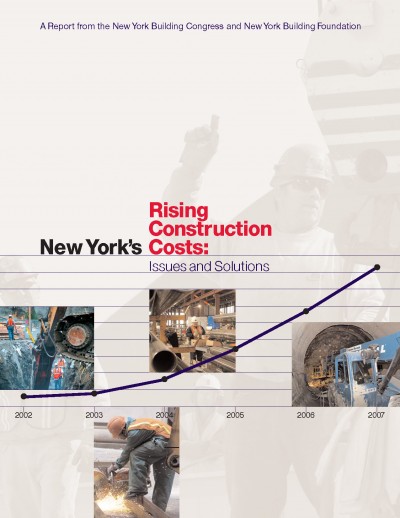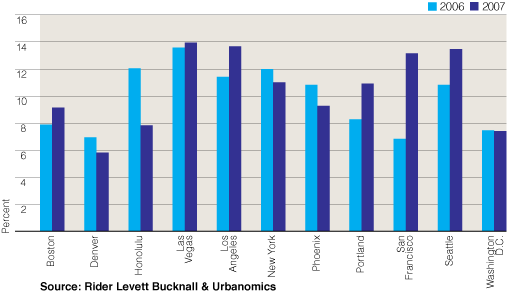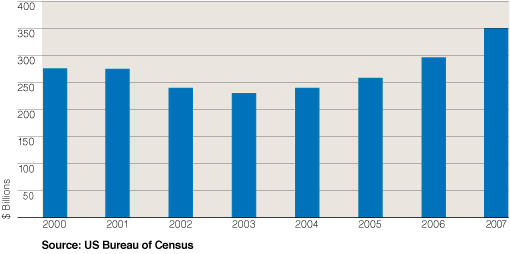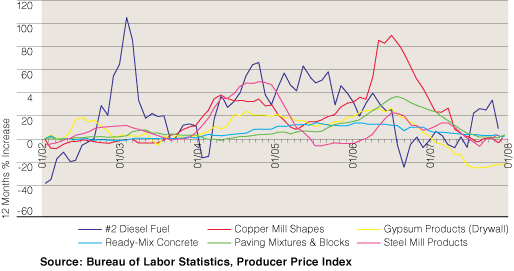
New York's Rising Construction Costs: Issues and Solutions
National Conditions
Since the beginning of 2004, the cost of construction nationally has escalated dramatically. In 2004 and 2005, average annual increases in building costs rose eight to nine percent. That rate of escalation more or less continued in 2006 and 2007, with increases of 10.4 percent and nine percent, respectively. This nearly unparalleled rise in bid costs of construction, which include labor, materials and general contractor and subcontractor overhead and fees, has impacted most major cities, with the hottest spots experiencing cost increases that are nearly double the national average.
A major contributing factor in demand-driven cost escalation has been the sheer volume of construction put in place. Nationally, non-residential construction spending has surged 42 percent since 2004, to an annual average volume of nearly $350 billion, led by sectors such as hotels, offices, sports venues and educational facilities. When residential and government spending are also considered, the value of all construction spending annually exceeds $1.1 trillion.
| Annual Construction Cost Escalation in SelectedU.S. Cities, 2006 & 2007 |
 |
The factors causing building cost increases nationally flow mainly from the globalization of markets for energy and materials, the weakness of the dollar in world markets and the impact of worldwide construction activity. Booming economies in China and India, coupled with ongoing recovery efforts where natural disasters have occurred, have created a fierce international competition for scarce resources, driving prices higher. With declines in the domestic production of construction commodities and the manufacturing of semi-finished building materials,U.S. builders have increasingly found themselves competing for materials and fueling demand in the global marketplace.
| Non-ResidentialConstruction Spending in the U.S., 2000-2007 |
 |
In addition, price spikes in strategic commodities, such as copper, concrete and fuel, and margins added by suppliers and subcontractors, have contributed substantially to the escalation in hard costs. Notably, along with adding to overall inflation, the high price of oil at over $130/bbl has had a significant direct and indirect impact on construction operations and materials. As the price of oil increases, so does the cost of operating on-site machinery, which include excavators, pumps, generators and heaters. The costs of petroleum by-products, like plastics, rubber, asphalt, carpet and roofing materials, also move with the price of oil. Although trends in selected commodity prices showed less volatility at the national level in 2007, they continue to illustrate the climate of material cost escalation in which New York builders must operate.
| Commodity Price Increasesin Selected Construction Materials, 2002-2008 |
 |
Labor and soft costs also play a role in the upward trend of construction costs nationally. With regard to labor, while overtime has risen overall and wages have grown at a moderate pace, the cost of fringe benefits, such as health care, have been on the rise. Soft costs have tended to keep pace with hard costs as the price of insurance and compliance with public regulations increases.



